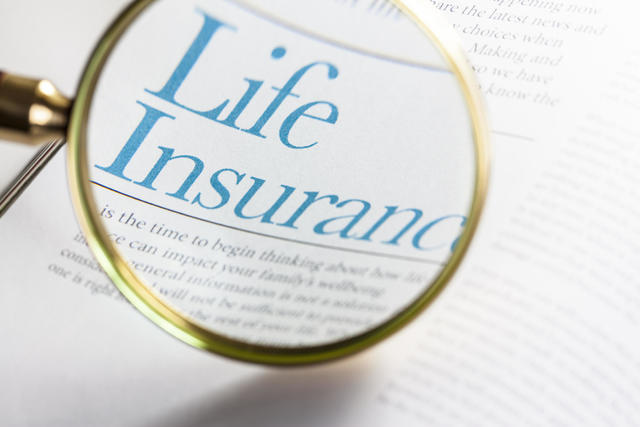Because life insurance ensures that your loved ones are financially protected in your absence, it is an important part of financial planning. However, many variables can cause life insurance premiums to fluctuate significantly. Understanding the premium calculation process can help you choose a life insurance policy that meets your coverage needs and financial goals.
1. Factors Affecting Life Insurance Prices
Many factors affect life insurance premiums, and each factor is important in determining the final cost. The age, health, and lifestyle of the insured, the type of policy, coverage, and term of the term plan are all important considerations. Young, healthy people often have cheaper premiums due to a lower risk of death; on the other hand, dangerous hobbies or smoking can significantly increase costs.
2. The Influence of Age on Premiums
An important factor that affects the cost of life insurance is age. Insurers view younger applicants as lower risk, mainly because they are less likely to die soon, which reduces the likelihood that the insurance company will have to pay a death benefit shortly. Therefore, investing in early life insurance is a cost-effective strategy because premiums increase with age as the statistical probability of death increases.
3. Health-related Problems
Insurance companies also take health factors into account when determining life insurance rates. Most life insurance policies require a physical examination to determine the applicant’s current health. Chronic diseases, diabetes, high blood pressure, obesity, and other conditions can cause premiums to rise. Additionally, a family history of certain genetic conditions can increase perceived risk and affect the price of your insurance.
4. The Significance of Lifestyle Decisions
The cost of life insurance can be significantly affected by your lifestyle decisions. Because they carry a higher risk, risky behavior such as drinking alcohol, smoking, and participating in extreme sports can result in higher premiums. On the other hand, a healthy lifestyle with regular exercise and a balanced diet will lower your premium as it reduces the chance of premature death.
5. Types of Life Insurance
The decision between whole life insurance and term life insurance also affects premiums. Because term life insurance does not increase the cash value, it often makes more sense. It provides coverage to the insured for a specified period. In contrast, whole-life insurance policies tend to have higher premiums because they provide lifetime coverage and accumulate cash value. Whole life insurance, on the other hand, has an investment component and charges for the entire life of the insured.
6. Insured Amount
The cost of life insurance is directly affected by the coverage provided. As an insurance company’s financial risk increases, higher coverage limits mean higher rates. An accurate estimate of the amount of coverage you need, based on expected future expenses and the financial needs of your dependents, is critical and must be weighed against the premiums you can afford.
7. Policy Term
The term of the term has a major impact on term life insurance premiums. Because the insurance company is more likely to pay a death benefit, the longer the policy term, the higher the premium. Your current age, your financial obligations, and the expected reduction in those obligations are all important factors to consider when determining the ideal term.
8. Additional Passengers and Benefits
To increase benefits, additional passengers can be added to a life insurance plan for a fee. Typical riders include a premium waiver, where premiums are waived in the event the insured becomes disabled and can no longer work, and an accelerated death benefit, which allows the insured to receive a portion of the death benefit under certain circumstances, for example, as a terminal disease.
9. Evaluate Policies and Conduct Research
To determine the most suitable and affordable life insurance policy, it is crucial to compare quotes from multiple insurance companies. Price differences can be significant when it comes to the way different organizations assess risks and calculate premiums. By using online comparison tools and talking to an insurance agent, you can learn more about which policies are best for your specific situation.
10. The True Cost of Life Insurance
The ultimate value of life insurance is the protection and peace of mind it provides, even though the financial costs are expressed in premiums. A major benefit of overcoming expenses often is knowing that your family will have stable financial support even without you. Life insurance is more than just an expense; It should be considered an important part of your overall financial plan.
Conclusion
Many factors, such as lifestyle choices, personal health, and policy type, will affect the cost of life insurance. Knowing these things will make it easier for you to choose a life insurance policy that suits your budget constraints while providing the necessary coverage in the confusing world of life insurance. Purchasing life insurance can provide your loved ones with invaluable assurance that your financial obligations will be met even in your absence.
FAQs
1. Which variables influence the level of life insurance premiums?
Many variables, such as the age, health, and lifestyle of the insured, the type of policy, coverage, and term of a term life insurance policy, all affect the cost of a life insurance premium. Although smoking and other high-risk lifestyle choices can increase costs, younger, healthier people tend to pay cheaper premiums.
2. How do life insurance rates change with age?
One of the most important variables that affects life insurance rates is age. Younger applicants pay cheaper premiums because they are seen as lower-risk candidates. Your rates typically go up as you get older because insurance companies are more likely to pay death benefits.
3. What is the meaning of health in a life insurance application?
Because life insurers estimate an applicant’s risk of premature death, health affects premiums. A family history of certain genetic conditions and pre-existing or chronic conditions may contribute to a higher prevalence.
4. Do Lifestyle Choices Affect the Cost of Life Insurance?
Yes, lifestyle has a significant impact on the cost of life insurance. Premiums for risky habits such as smoking, drinking alcohol, and participating in extreme sports may increase. Insurers take these factors into account because they have the potential to significantly shorten life expectancy and increase the risk of premature claims.
5. What are the financial differences between whole life insurance and term life insurance?
Because term life insurance is only valid for a certain period and does not accumulate cash value, it is generally cheaper than whole life insurance. Whole life insurance has an investment component and lasts the life of the insured, meaning premiums are higher.
6. How is the required amount of coverage determined?
Your financial obligations, debts, income, and dependent needs all influence the amount of life insurance you should purchase. A popular recommendation is that the death benefit be ten to fifteen times your annual salary.


